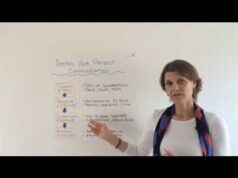Taking Organizational Conversations into the Unknown in Order to Facilitate Change
Overly structured conversations create standstill and kill the potential for innovation and change. In order to put an end to this, you and your colleagues can reinvent your conversations by following the lead of a musical legend.
David Bowie surprised everyone during a live interview in the seventies. Opposite him sat a well-prepared interviewer clinging to a handful of papers that had all of his questions neatly ordered and written down. Bowie and the interviewer were laughing and chit-chatting before the interview was about to begin.
At the exact moment, the go-ahead was given to start the interview, Bowie leaned forward, grabbed the interviewer’s papers and tore them into thousands of pieces. The interviewer was clearly in shock. What now? Bowie looked pleased.
Tired of always being asked the same old questions – and giving the same familiar answers – he had tried to create a starting point for a more lively and spontaneous conversation. A step was taken into the unknown in order to enhance the chances of creating – and experiencing – something new. The interview could now begin.
What is a living conversation – and what is a dead one?
Many organizations have developed highly structured meeting cultures, which often result in so-called “dead conversations”. These conversations are typically characterized by a high degree of predictability and stability, so that one is able to control conclusions and results in advance. Everybody knows their role, the boundaries for interaction are narrow and what is being said somehow feels rehearsed.
You might claim that such conversations (unknowingly) are a mechanism to defend oneself against the uncertainty and angst associated with complexity.
If you, on the other hand, want to initiate organizational conversations with real potential for change, this calls upon a different kind of interaction. A way of communicating where one is able to embrace the unpredictable and use it as a motor for organizational change. In this case, it is the leader’s role to create a framework, which allows conversations that would not take place otherwise.
The leader must help open up space for a joint reflective practice and open-ended exploration, while at the same time supporting spontaneous responses between participants.
In “Changing Conversations in Organizations – A Complexity Approach to Change”, Patricia Shaw outlines the hallmarks of a living conversation. Among these are:
- unrehearsed expression replaces familiar and polished phrases
- the participants surprise one another – and even themselves
- they begin to open up and speak about vague doubts and uncertainty
- glimpses, half-formed ideas, and intuitions are appreciated instead of suppressed
- stories and anecdotes about previous experience are shared and related
- the participants listen carefully to each other;
- the conversation makes unexpected jumps, because of spontaneous associations
- misunderstandings arise and the need to make a definitive decision becomes less urgent
In this way a living conversation can be compared to what typically happens during a break from a more structured organizational process: we have all experienced scheduled meetings where nothing really happens, but where all the important stuff is being said during the coffee break (think for a moment what would happen if your next meeting was designed as one prolonged coffee break???)
Or the magical moment where a formal conversation is about to come to an end, but suddenly – out of the blue – you open up for new important things, which have previously been unsaid.
What both these situations have in common is that the informal – and the uncontrolled – get more room to manoeuver. In other words, by loosening up the constraints you can design a space, which supports “the new important stuff”. A space, which is often killed off by predetermined agendas, best practices, and speedy consensus.
Conversations are not about being safe
It was the great Miles Davis who once said that “Music is not about being safe.” You might say the same about organizational conversations when your purpose is to facilitate change, “Conversations and meetings are not about being safe.” Not being safe sometimes has to do with stopping things that we normally do – and starting to do things that feel counterintuitive to our normal practice.
Shaw provides these examples from her own practice – things that she just doesn’t do:
- I do not prepare detailed designs for meetings, conferences or workshops
- I do not develop detailed aims and objectives in advance
- I do not clarify roles and expectations or agree on ground rules at the beginning of projects
- I do not hold back my views or opinions
- I do not develop clear action plans at the end of meetings
- I do not ”manage” process
What she is actually doing is loosening up the constraints in order to establish a heightened but not a debilitating sense of uncertainty. Like Bowie, she is trying to embrace the unknown in order to enhance the chances of creating – and experiencing – something new.
Not being safe also means accepting and recognizing the feeling of discomfort that can arise when we meet and discuss. This freedom can serve as a vehicle for navigating complex organizational challenges where we don’t even know the problem yet, like this team of leaders reflecting on how to move forward:
”As we don’t know exactly what the problem is, we can’t solve it and this makes us feel uncomfortable again. To get out of this mess we have to be aware of this feeling of discomfort, use it as a driving force, don’t try to replace it by an artificial harmony…
We need to allow meetings which develop their own momentum and results – without driving them into a certain direction. If there is facilitation and a certain structure this must be to help the meeting develop its own dynamic – not to hinder it…
We need to develop skills of open discussion, covering sensitive issues that all too often get pushed aside by formal agendas” (Shaw, 2002).
5 ideas that will help create living conversations and boost organizational change
Facilitating a living conversation demands a different approach – and other competencies – compared to more structured organizational conversations and meetings. Here are five tips that will get you started working live:
1 – Leave your PowerPoint show and detailed agenda at home
– instead find the minimal structure, or groove, that gives you – and the people you work with – the maximum freedom to react spontaneously to each other. Be aware of the powerful need for security that will pull you towards a high degree of structure and planning in advance. This comes at a cost: a feeling of “constraint”.
If there is too much structure it will stand in the way and obstruct your efforts to create change. But if there is too little, it creates too much uncertainty and confusion. Therefore aim for an experience with a heightened but not a debilitating sense of uncertainty.
2 – Focus on your state of mind
– be open, present and ready to encounter anything. Let go of the belief that you need to be in control. Stay close to whatever is happening here and now – leave it be and watch how things unfold organically “by themselves”. Try to disrupt routine responses and challenge established power relations. Make it legitimate to say things and think thoughts that you normally wouldn’t.
3 – Start with the participant’s own experiences
– and help them continually in taking their own experiences seriously. This is difficult because most of us have a tendency to focus on the ideal, the abstract or the “general picture”. It feels safe. Often it is far more difficult to talk about our concrete everyday experiences and our interpretations of them because they hold insecurity, vulnerability, and doubt.
What you are trying to zoom in on is the evolutionary potential of the present (D. Snowden) as the starting point for change as opposed to continuing to describe and striving to create ideal future states. What you should be aiming for is probably best described as the Joni Mitchell approach: “She is not gonna put lipstick and makeup on the truth.”
4 – Play with your own role
– do not limit or specify your own role unnecessarily in advance. Try for instance to step in and out of the role of the one who asks curious questions, is being silent, is voicing his/her own opinion and experience, provokes, shares mistakes or dares to be undecided.
5 – Have the courage to say Yes to the Mess
– most people feel a degree of discomfort – an inner resistance – when working with living conversations. Don’t worry, this is perfectly normal. The loosening of control, giving up on predictability and letting go of rigid structure probably feels counterintuitive to what you normally do. Therefore it takes courage to leave these rehearsed, well known and comfortable organizational conversations and take the first step into the unknown.
References
Shaw, Patricia (2002). Changing Conversations In Organizations – A Complexity Approach To Change. New York: Routledge
Snowden, David (2003). The New Dynamics of Strategy: Sense-Making in a Complex and Complicated World. IBM Systems, 426-483
*From ManageMagazine archive dated October 20th, 2016









An impressive share! I’ve just forwarded this onto a colleague who has been doing a
little homework on this. And he actually ordered
me breakfast simply because I found it for him…
lol. So let me reword this…. Thanks for the meal!!
But yeah, thanx for spending the time to discuss this matter here on your web page.
Hehe fantastic – I hope you enjoyed the free meal :))
Glad your friend also finds the article useful. The story about Bowie ripping the notes to pieces is one that I really like. Sometimes journalism and official conversations just get a little over-rehearsed.
If you and your friend are interested in communication, be sure to have a look at our most read article: Importance of Communication Skills for Leadership and Management
Let me know if you have any questions – you are always welcome to shoot me an email at [email protected]
Thanks for taking the time to leave a comment and share your story
We take buyer satisfaction really seriously.
Would you like to share how you take buyer satisfaction seriously? We’d be happy to learn about your take on it.